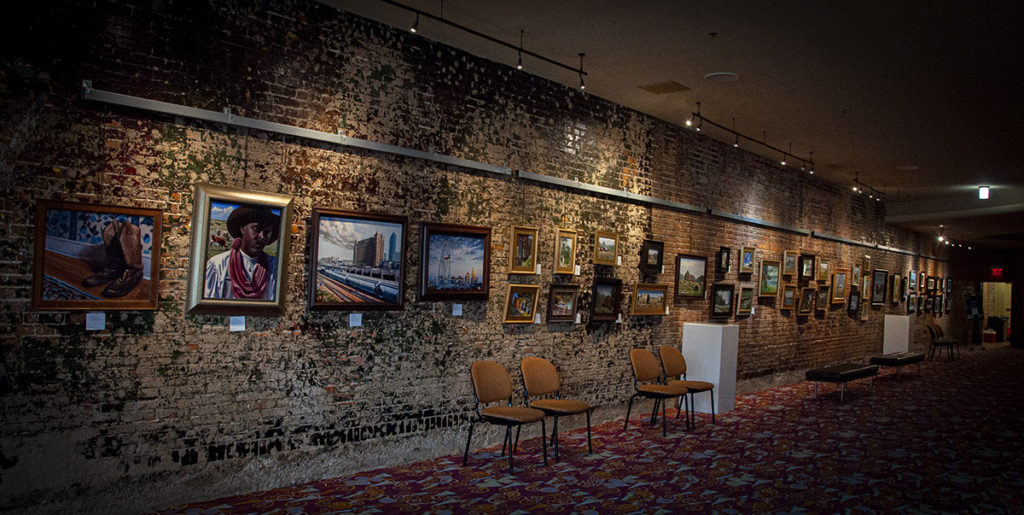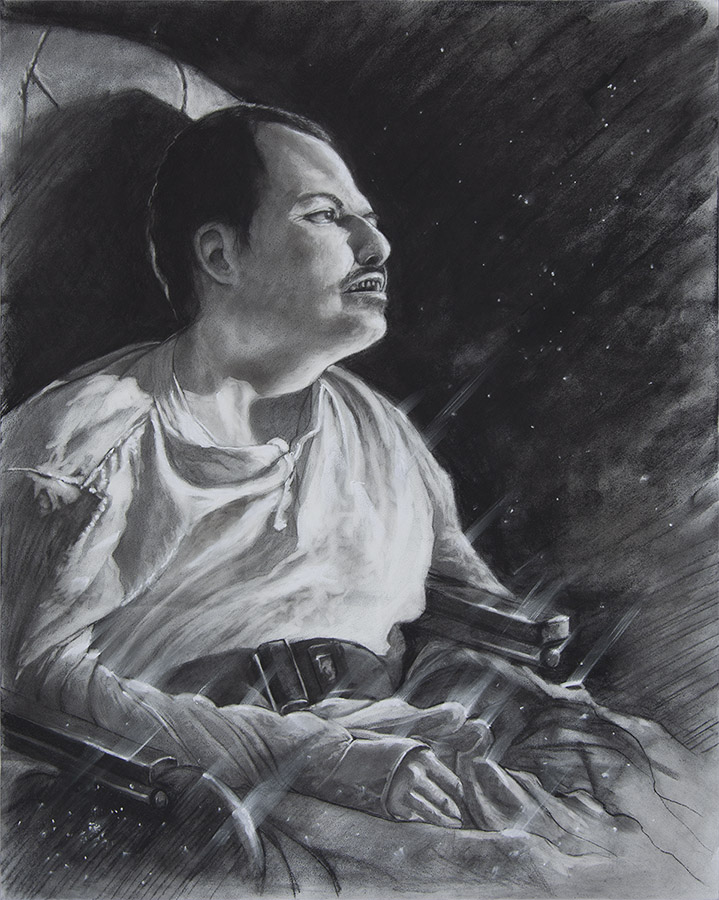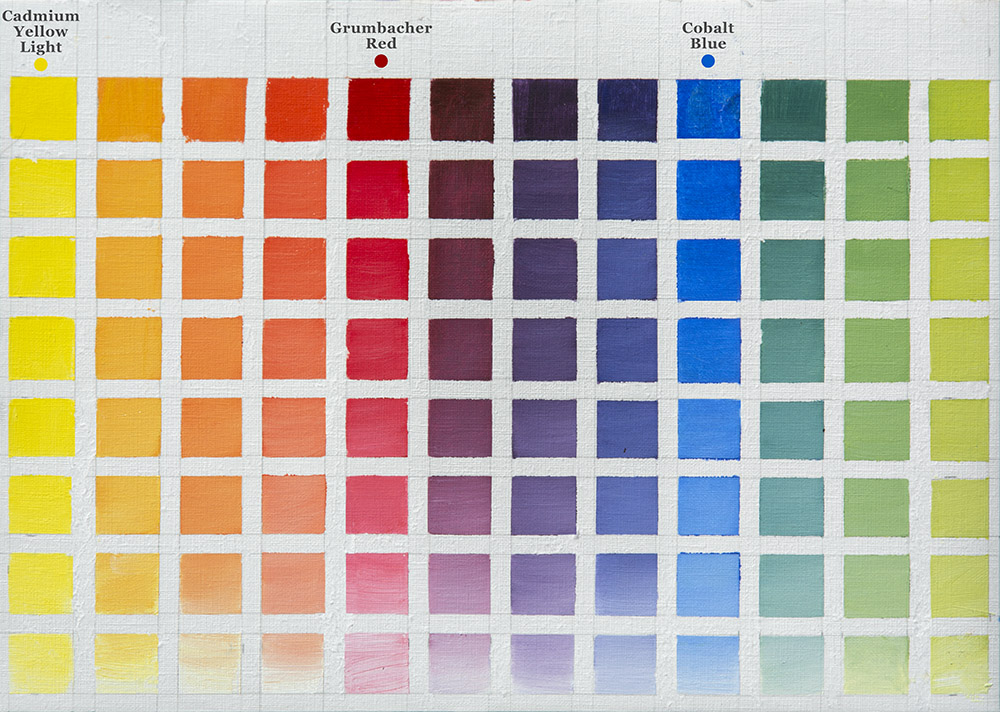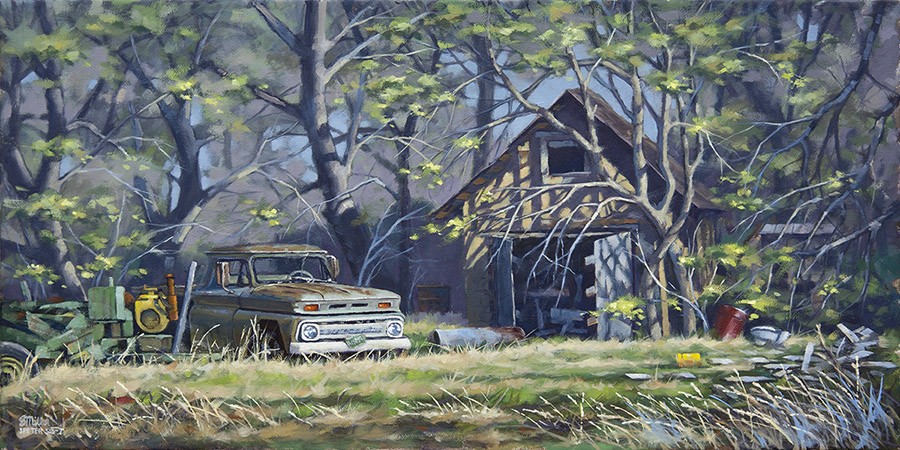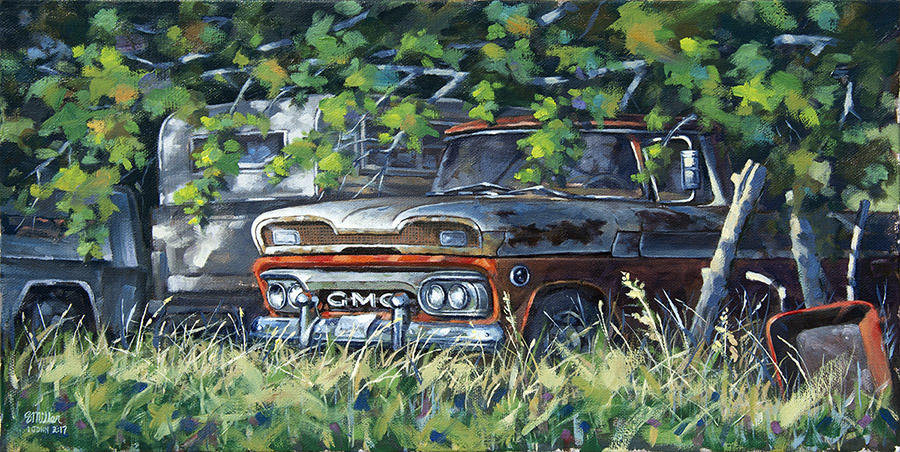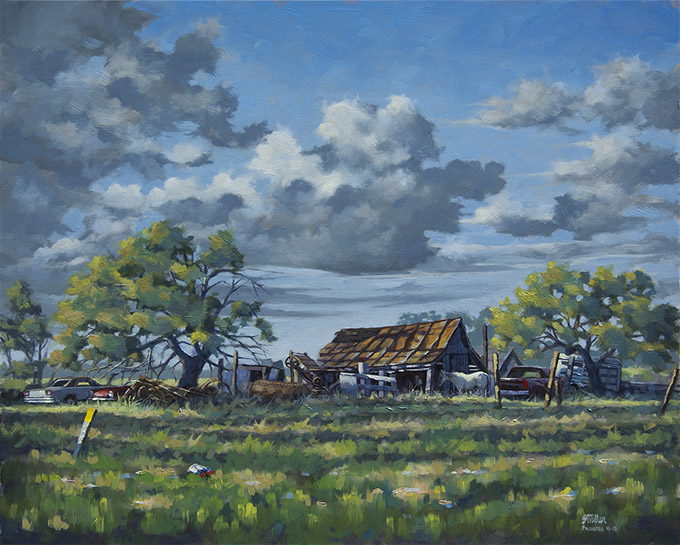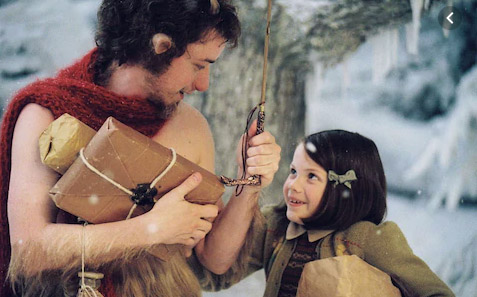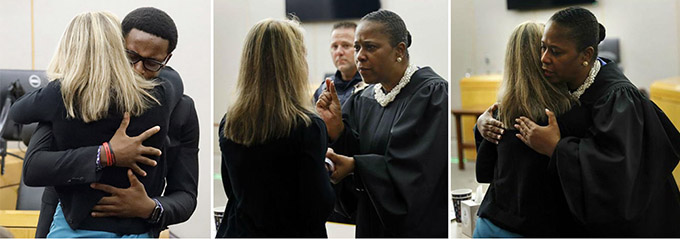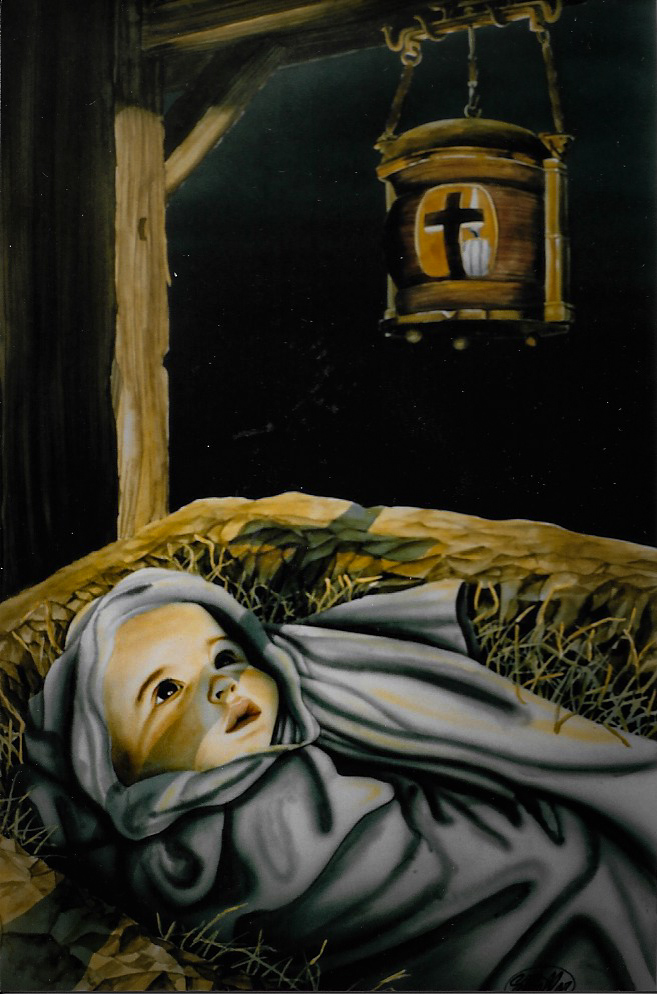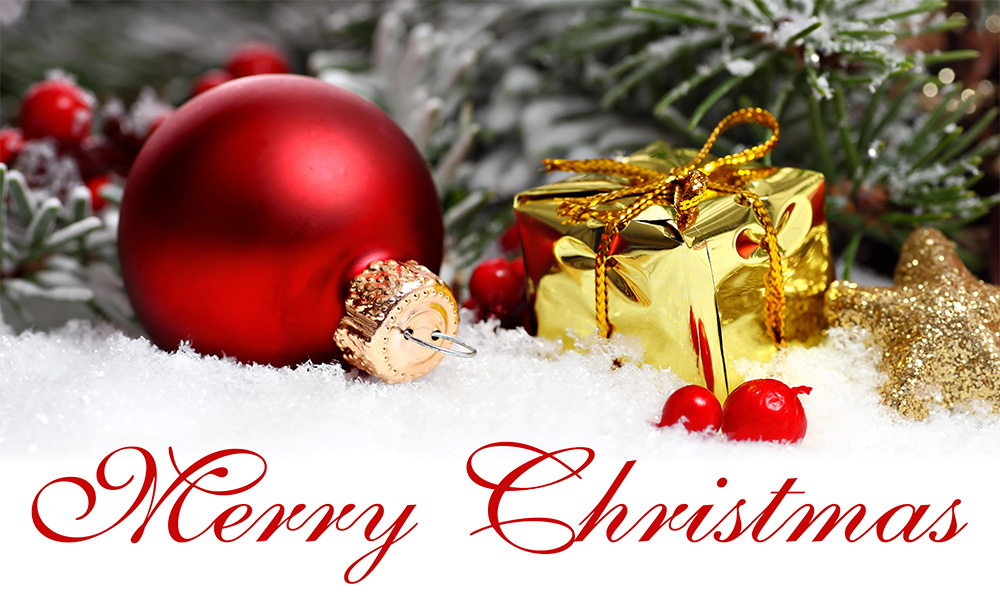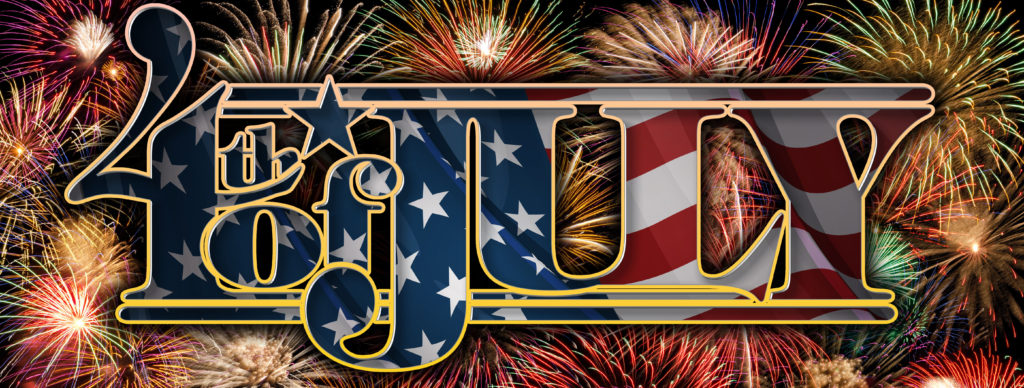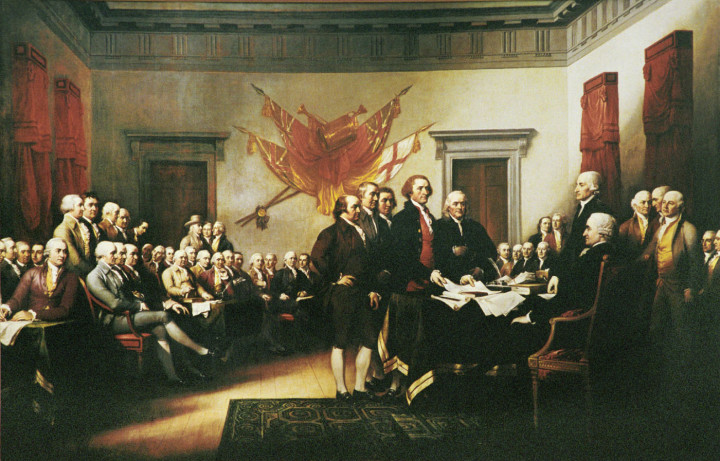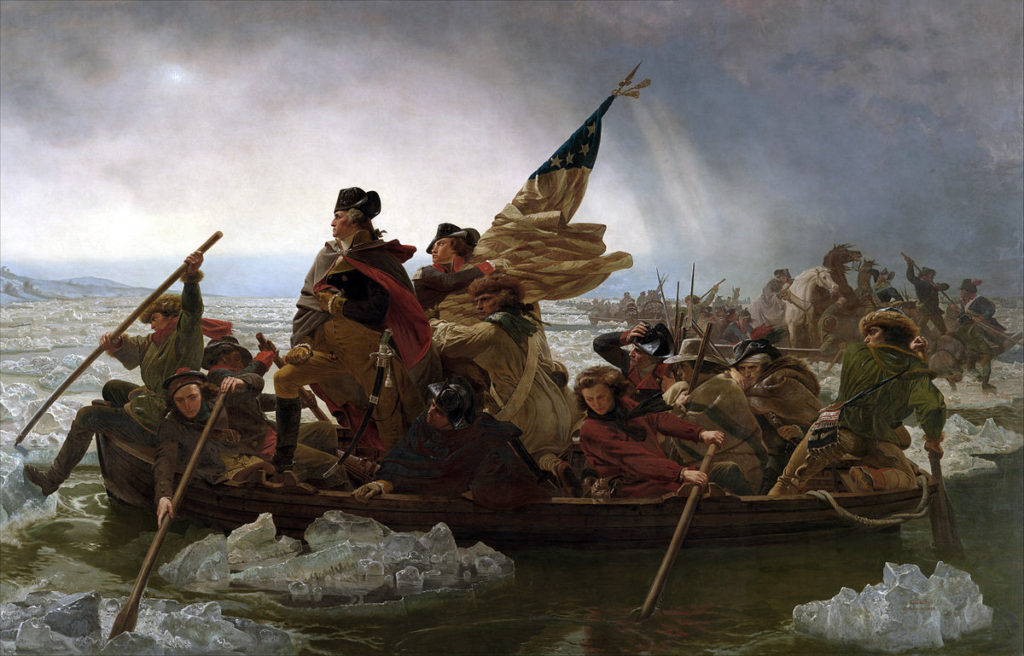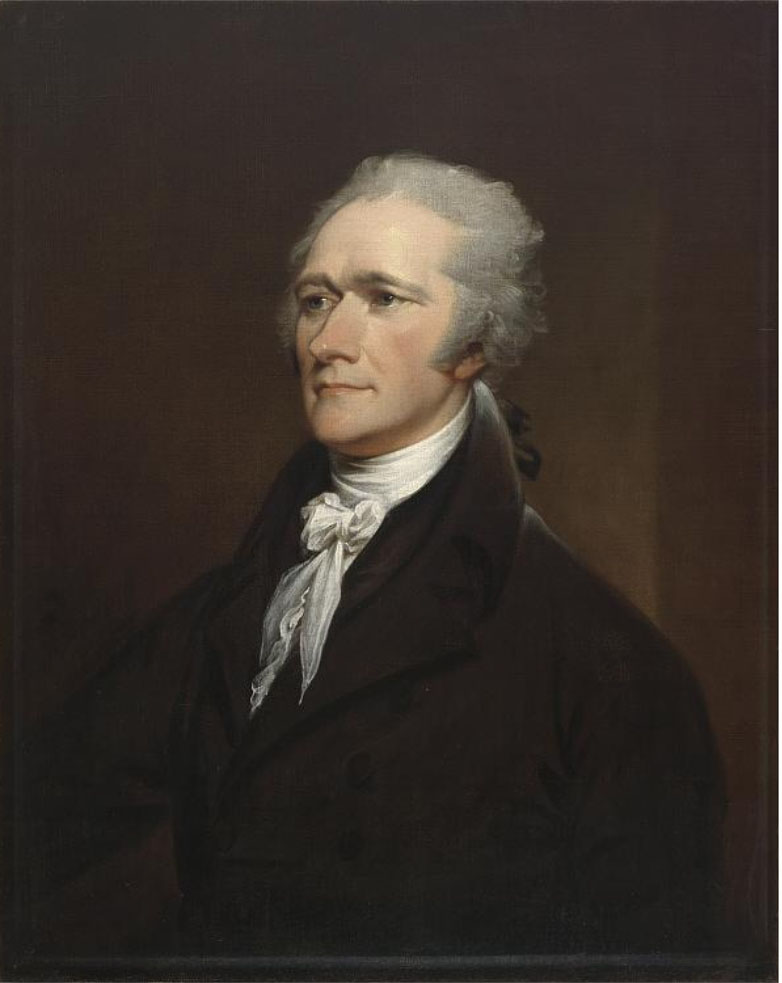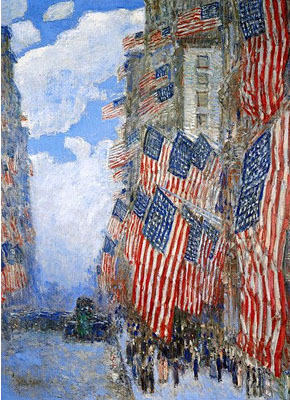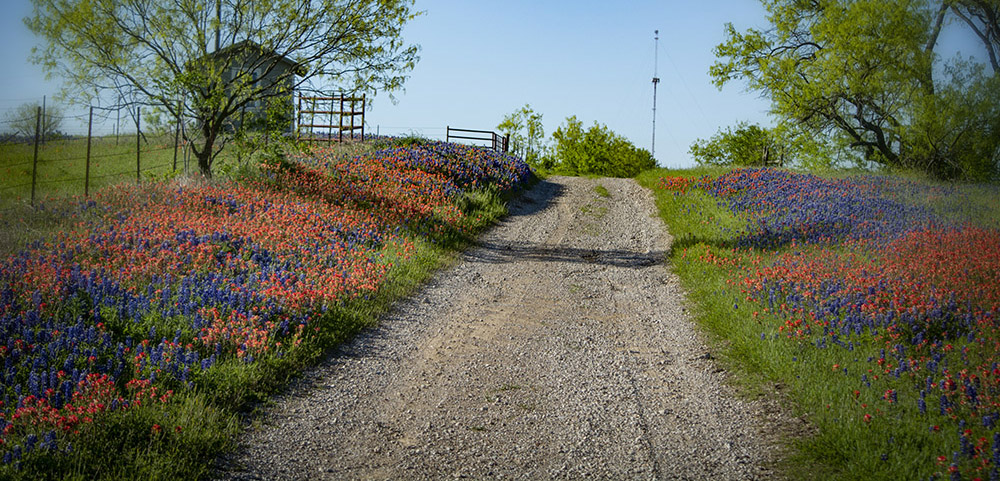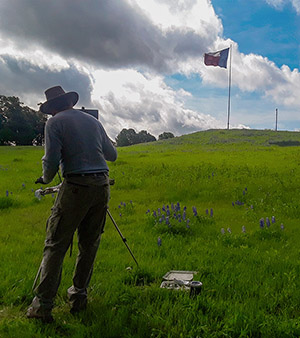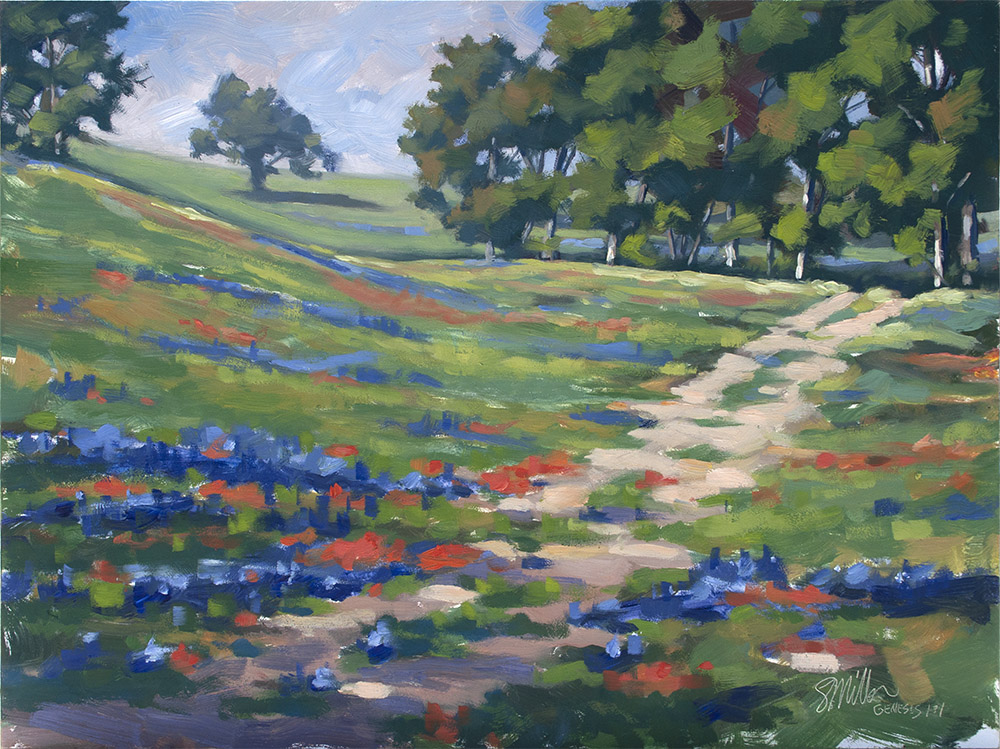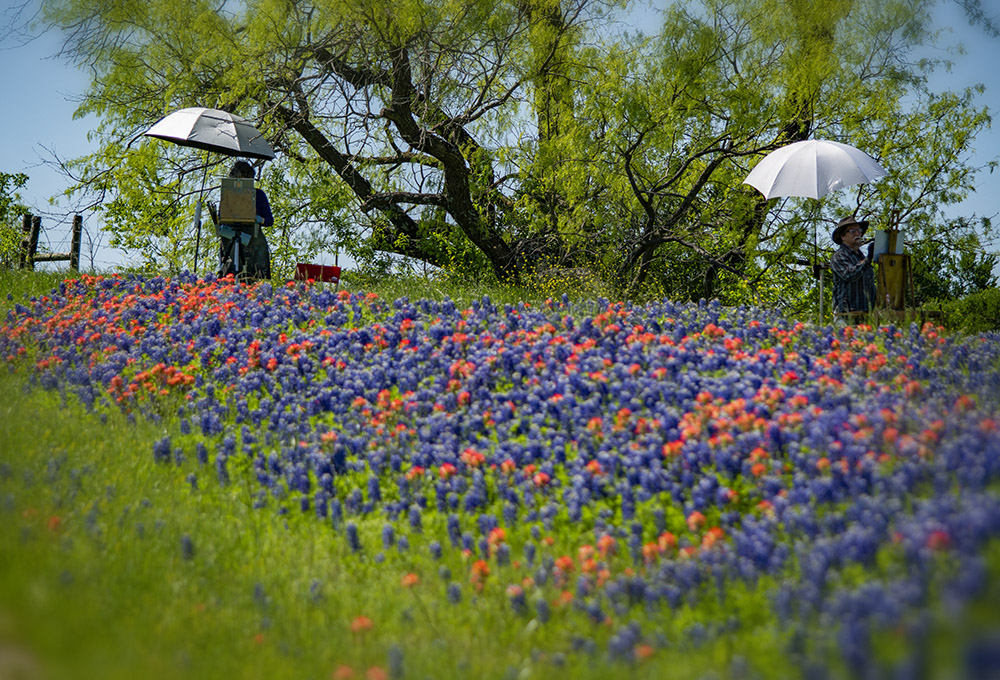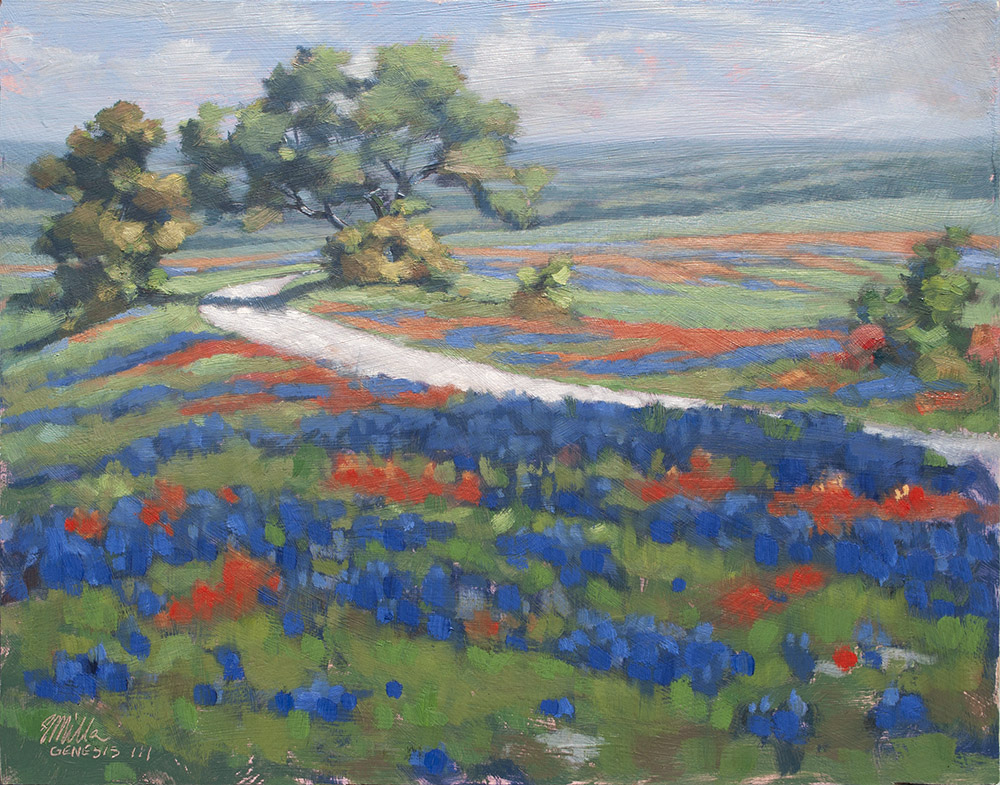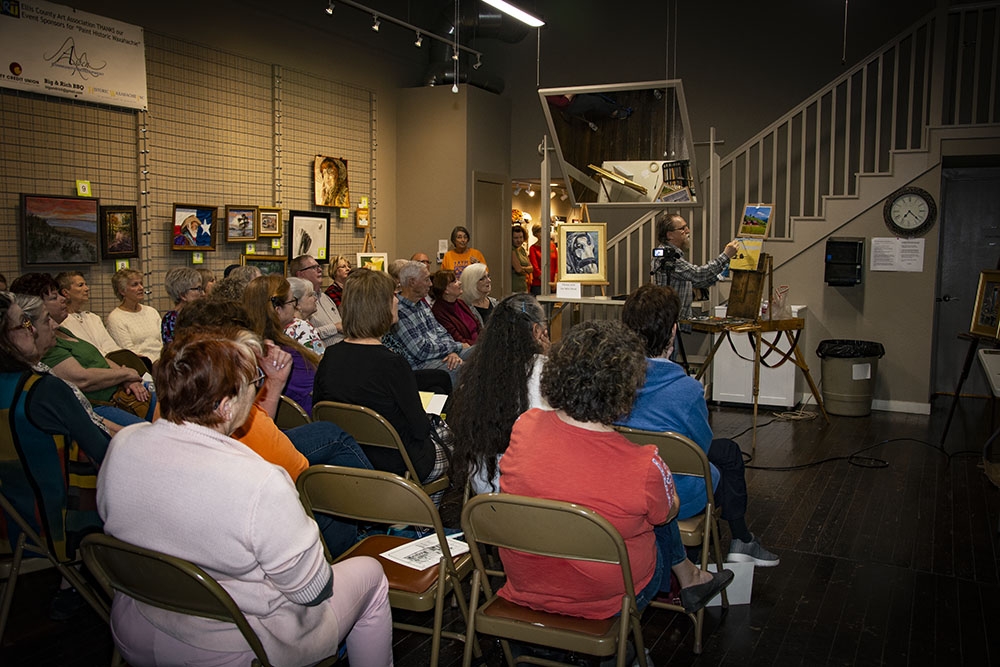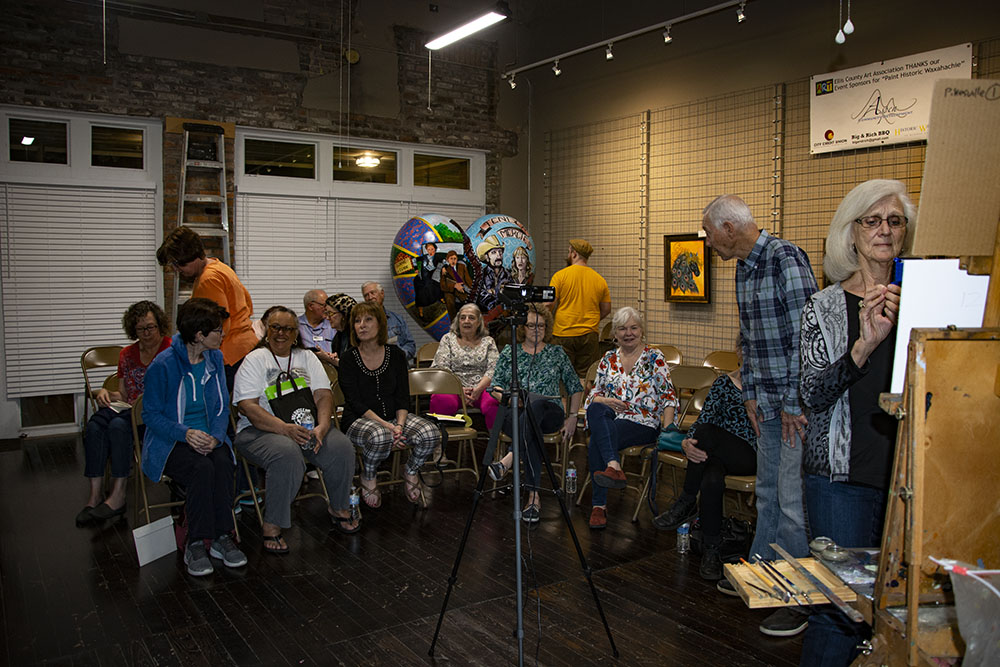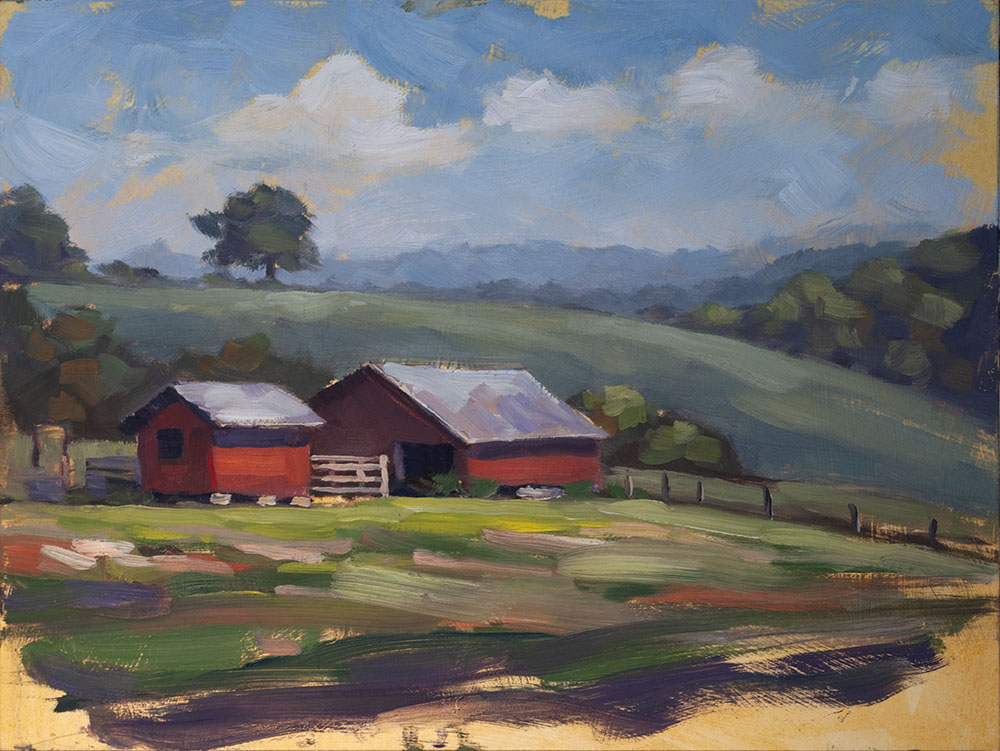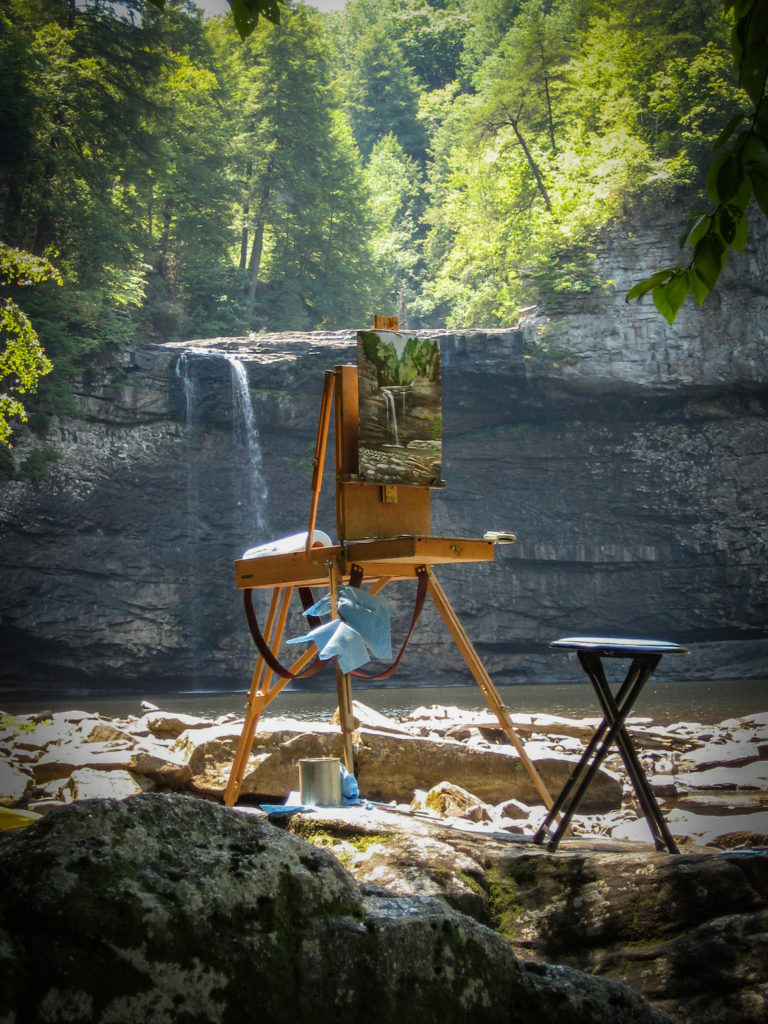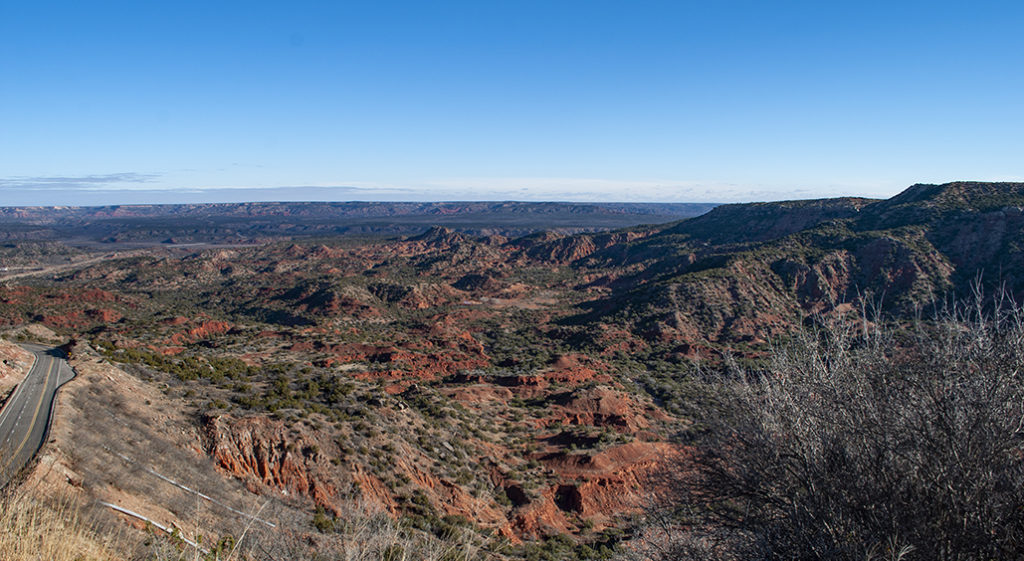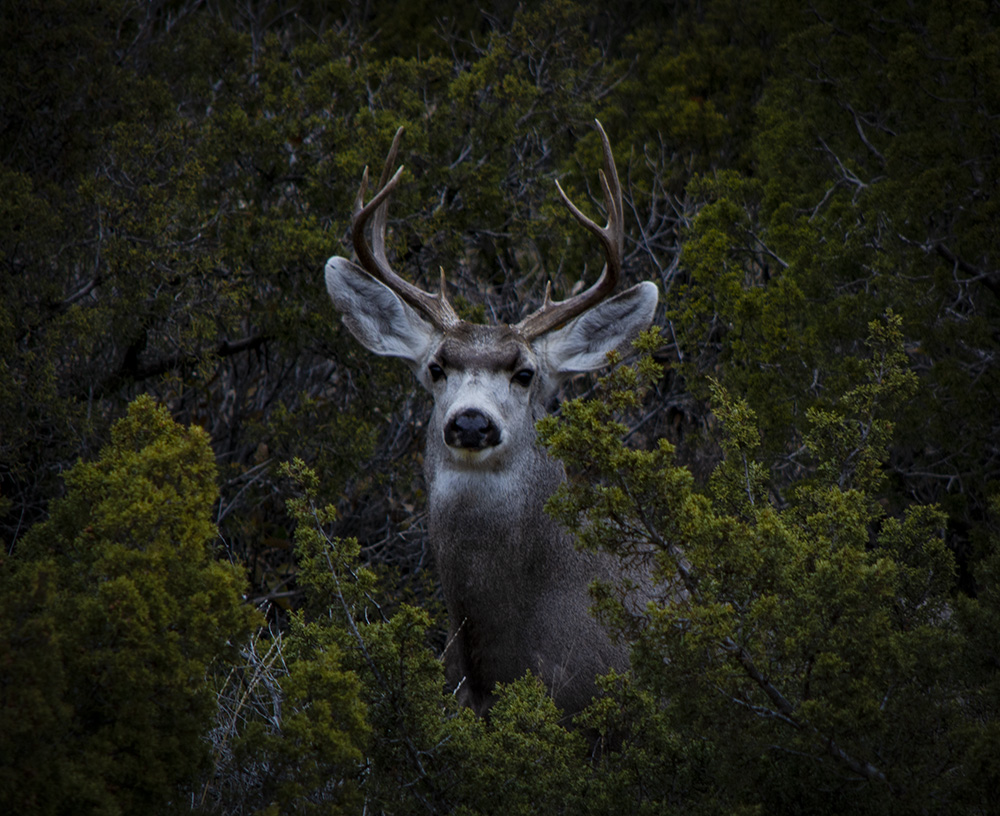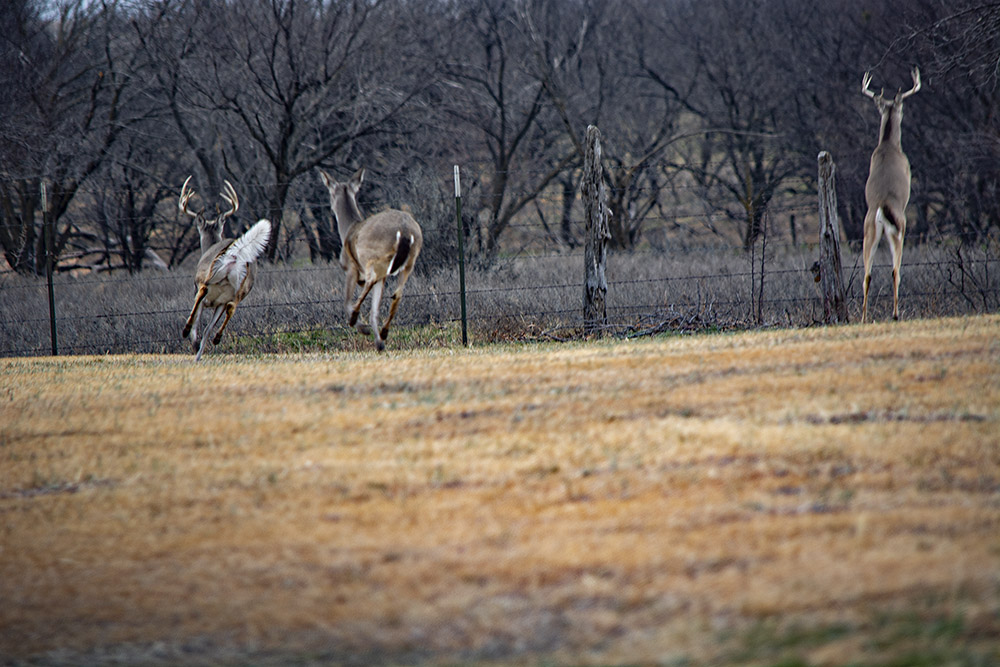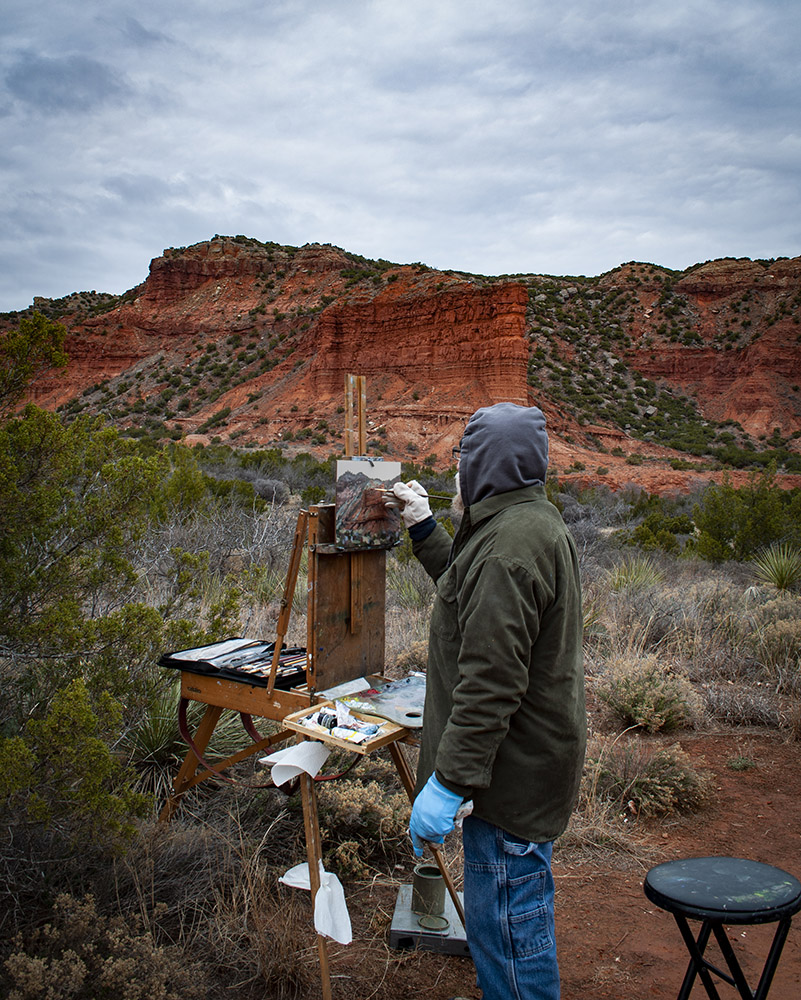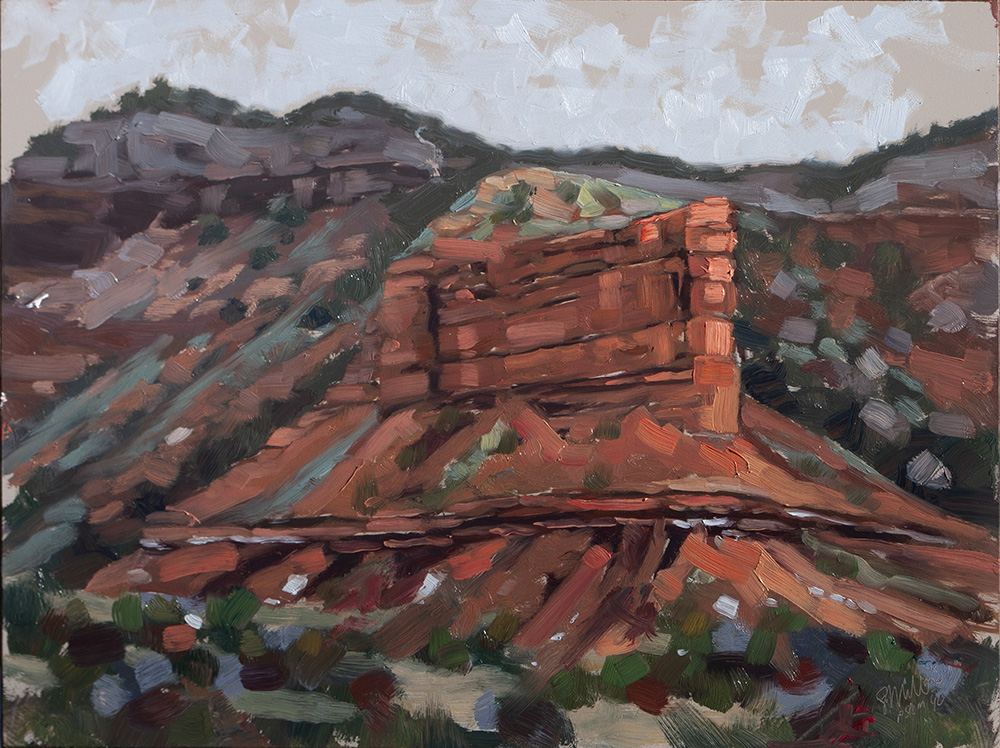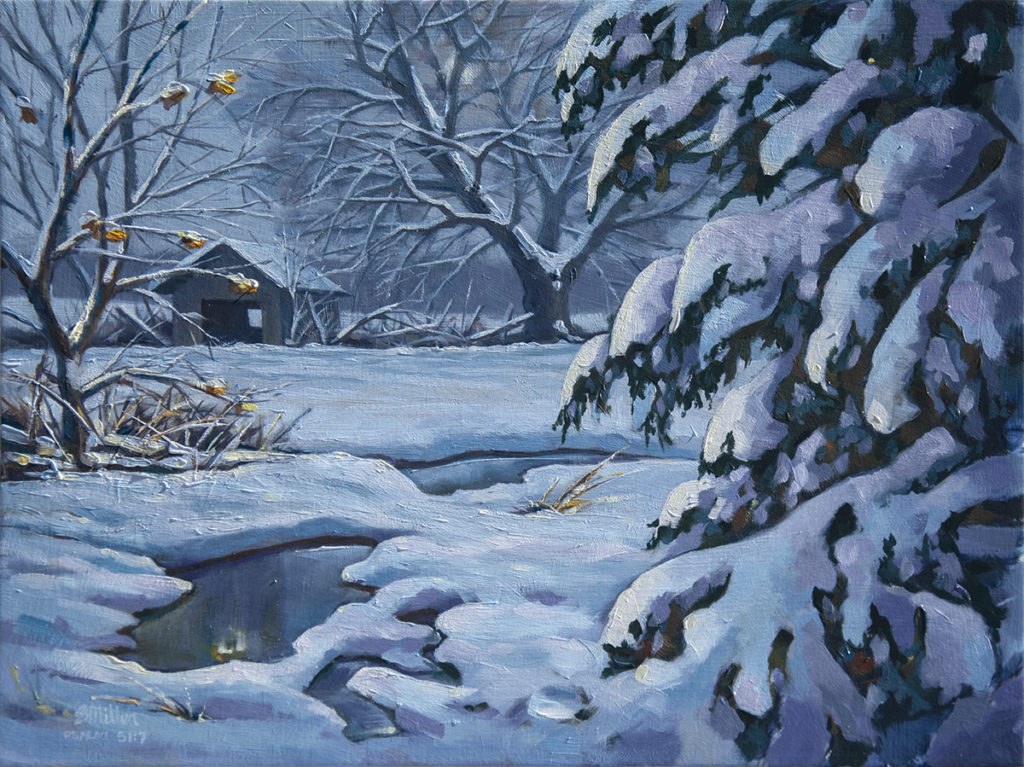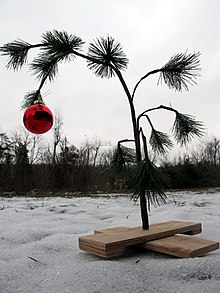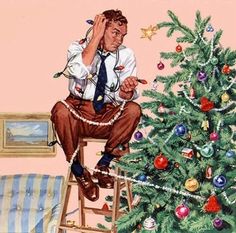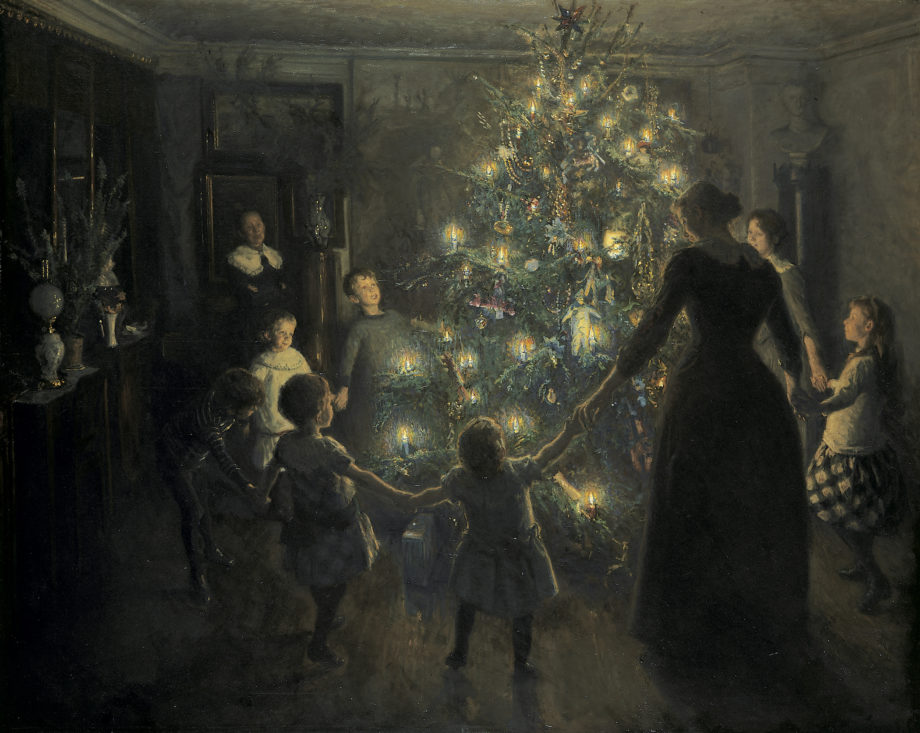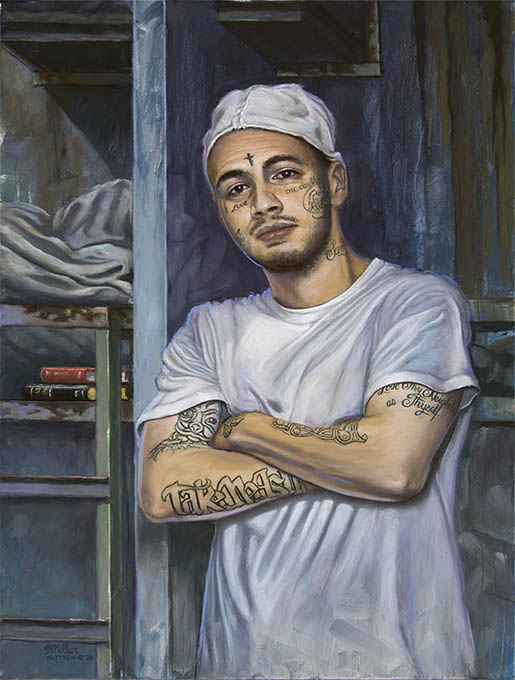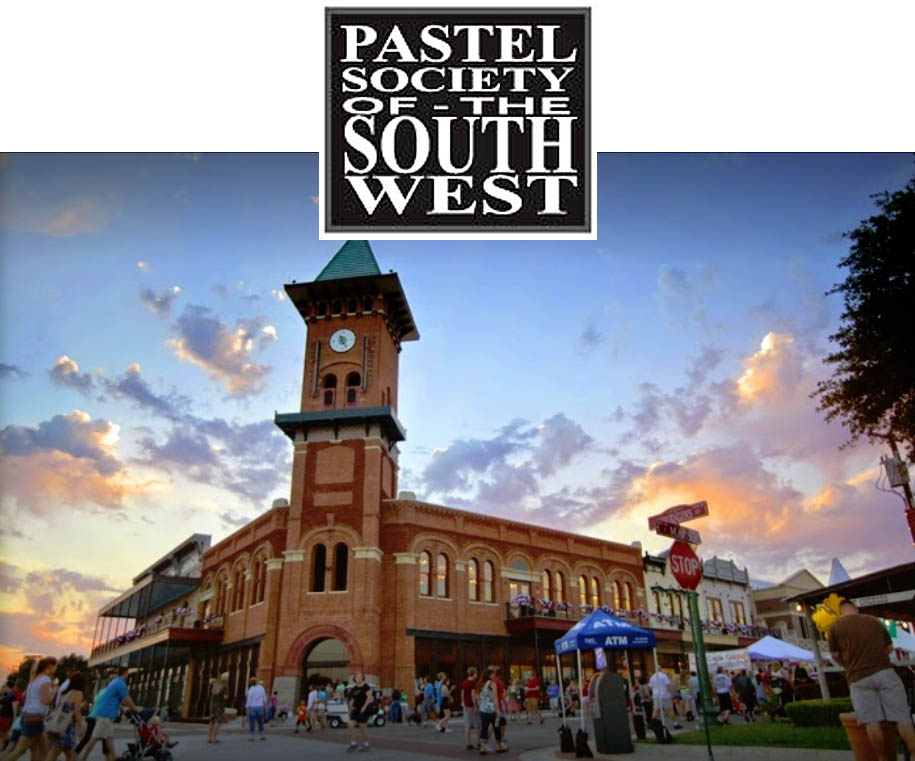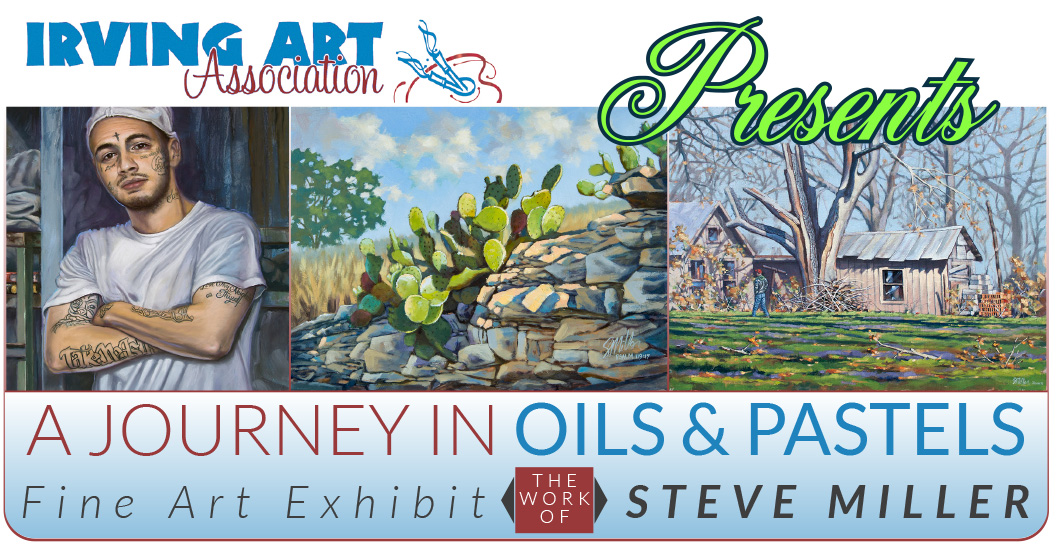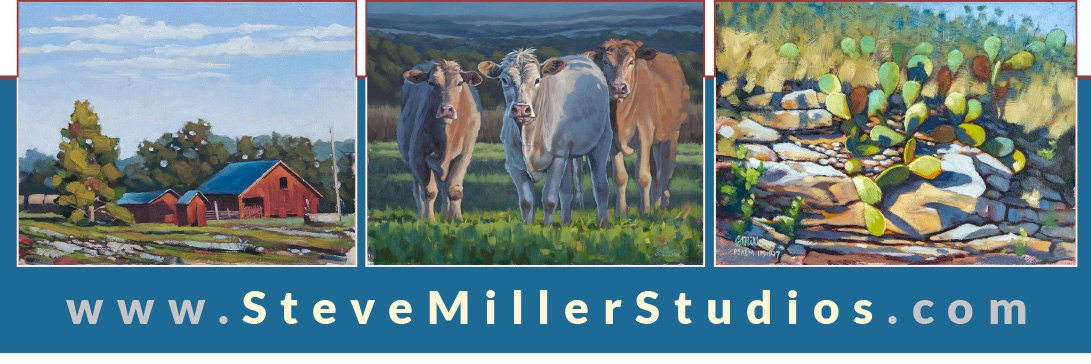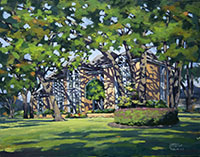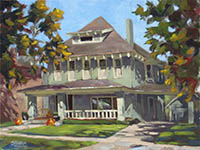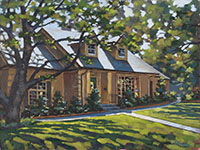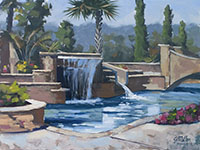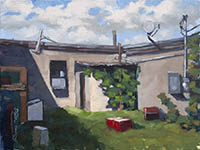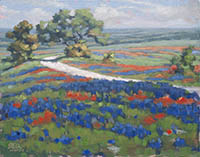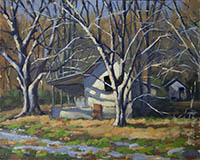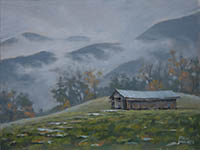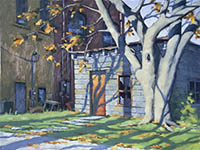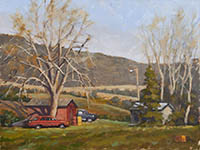I have always had this “bent” towards the visual…using pictures and illustrations to tell a story. In the past I have worked illustrating curriculum and stories for publications and companies. Jesus used word pictures to illustrate stories and ideas. One of my favorite illustrative stories Jesus told is in Luke 15, and starts in verse 11 with these words, “A man had two sons….”. It proceeds to give us a glimpse of our corrupt heart, and of Gods grace.
One week ago I was standing before a landscape with my easel set up to paint, and the image before me seems to illustrate the difficult times that we are in the middle of. My artist friend Pete Quaid and I went out in the dreary, cold morning to paint. We started in Dallas, but could find nothing of interest so we headed up 75 towards McKenney, Texas. The redbuds are in bloom along the highway and when up against the dark cedars, they can be very dramatic. We found an interesting spot just off the road with these two elements… cedars and redbuds and stopped and set up our easels in the cold, misty morning.
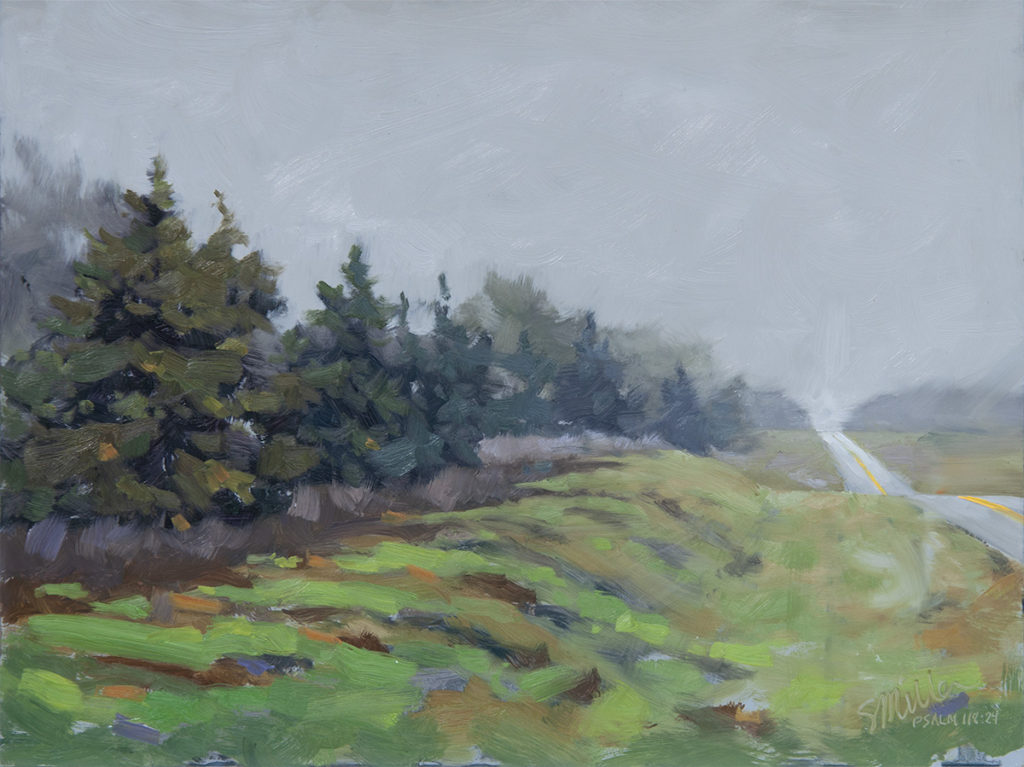
As I looked at the scene that stared at me waiting for the brush to meet the canvas (panel), I thought of how we were in a time as a nation and individually that we can not see very far ahead… the “road” of our lives seemed to be heading into the unknown, the uncertain; like a car heading down the highway into the mist. The dreary weather revealing nothing of what was to come.
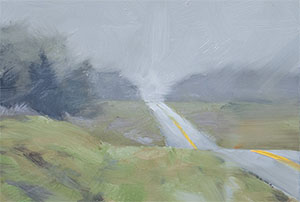
It is easy to forget, in our “warm and fuzzy”, Disneyland culture that God is in control, even in the tough things. His mercy sometimes comes in the form of a wake up call, jarring us out of meaningless slumber and pointing us back to the simple truth that He is God and we are not. As a father wants his children to trust him, God wants us to trust in Him. “ Therefore humble yourselves under the mighty hand of God, that He may exalt you at the proper time, casting all your anxiety on Him, because He cares for you.” I Peter 5:6-7
God is all powerful, all knowing and he loves us with a crazy love. Romans 5:8 says “But God demonstrates His own love toward us, in that while we were yet sinners, Christ died for us.”
And God is the only one who can take evil, or sickness or any other broken, twisted thing is this world and turn it for good. The current threat of the COVID 19 virus is definitely something He will use to point us back to His love and mercy. Because God is good, He will use everything for our good. Even a virus. We have to trust the one who holds tomorrow as well as today.
If you are a believer, if you know Christ as Savior and Redeemer, trust Him during these uncertain times.
“These things I have spoken to you, so that in Me you may have peace. In the world you have tribulation, but take courage; I have overcome the world.”
John 16:33
If you don’t know the God who created you, you can know Him through Christ. You will find in Jesus forgiveness and peace in this life, and unimaginable things to come in the life to come.
“ But what does it say? “THE WORD IS NEAR YOU, IN YOUR MOUTH AND IN YOUR HEART”–that is, the word of faith which we are preaching, that if you confess with your mouth Jesus as Lord, and believe in your heart that God raised Him from the dead, you will be saved; for with the heart a person believes, resulting in righteousness, and with the mouth he confesses, resulting in salvation.”
Romans 10:8-10
Another Day is Coming
“It is since Christians have largely ceased to think of the other world that they have become so ineffective in this.”
— C. S. Lewis
It is a loving God who calls us to Himself. It’s a loving God who reminds us that earth is not the “end game”, but that another world is coming. It is a loving God who brings us to the reality of our need for Him. Trust Him.
“Be anxious for nothing, but in everything by prayer and supplication with thanksgiving let your requests be made known to God. And the peace of God, which surpasses all comprehension, will guard your hearts and your minds in Christ Jesus.
Philippians 4:6,7
For additional resources, check out Eternal Perspective Ministries here:
The Mechanics…
This painting, Cedars in the Mist, was created using a limited palette. Pretty much everything I paint these days is done with a limited palette. I change up the colors, trying different combinations of primaries and palette options. I am convinced that this is an excellent way to approach oil painting, especially plein air work.
This painting was done starting with a Quadratic Square palette, starting with Cadmium Yellow Light, Alizarin Crimson and Ultramarine Blue as the three primaries.
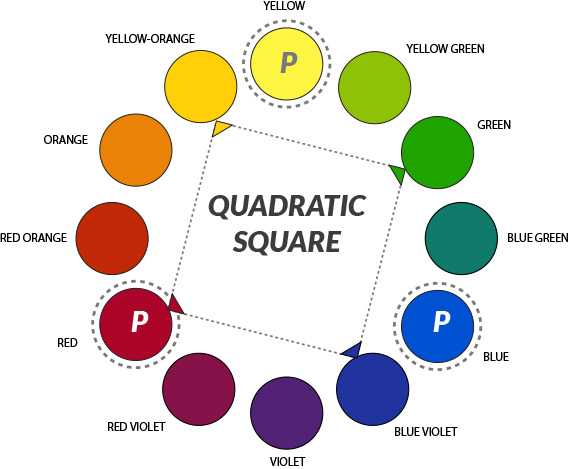
A Quadratic Square palette is simply picking four colors on the color wheel, skipping two colors in between (using a 12 color wheel) See Fig. 1 above. The four colors I choose to be the only colors on my palette, or “limited” to my palette, were Yellow-Orange (mixed from Cad. Yellow Light and Alizarin Crimson), Alizarin Crimson (straight from tube – the only tube color) Green (Mixed from Cad. Yellow Light and Ultramarine Blue) and Blue-Violet (mixed from Alizarin Crimson and Ultramarine Blue).
The secondary and tertiary colors plus the one tube color of Alizarin Crimson as the red, end up being the only colors on my palette, hence the “Limited Palette”. I add to these colors White and a Portland Grey Light and Portland Grey Deep. These greys, made by Gamblin are fairly netural and save time from mixing greys with the palette colors, which I do if I have the time. See Fig. 2 below.
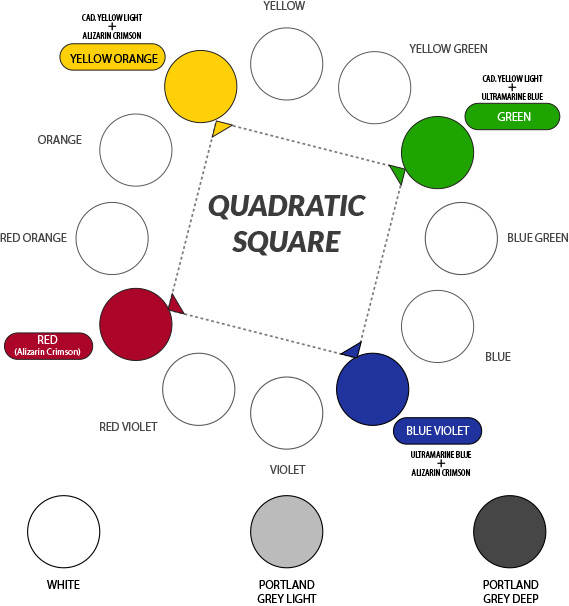
One of the major benefits of working with a limited palette is color harmony. The painting is forced to have harmony without the presence of discordant color. Another benefit, especially when working in plein air it the simplicity of the palette. Painting outside in changing lighting and conditions, a limited palette can speed up the process.

